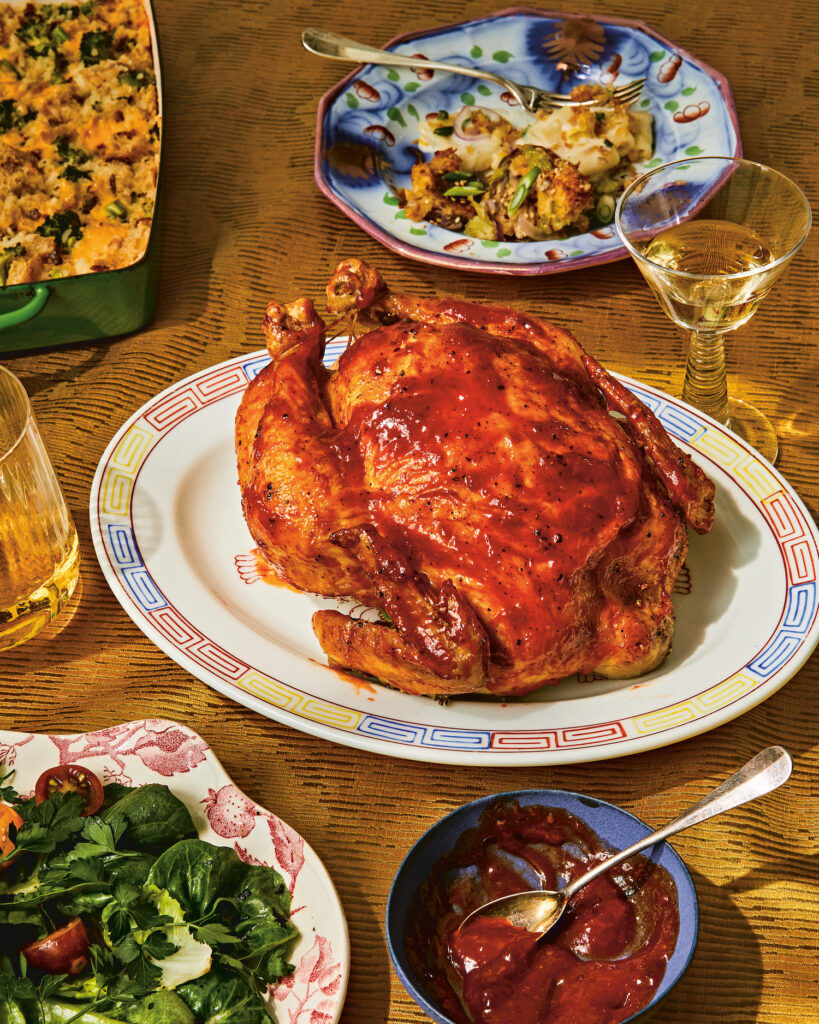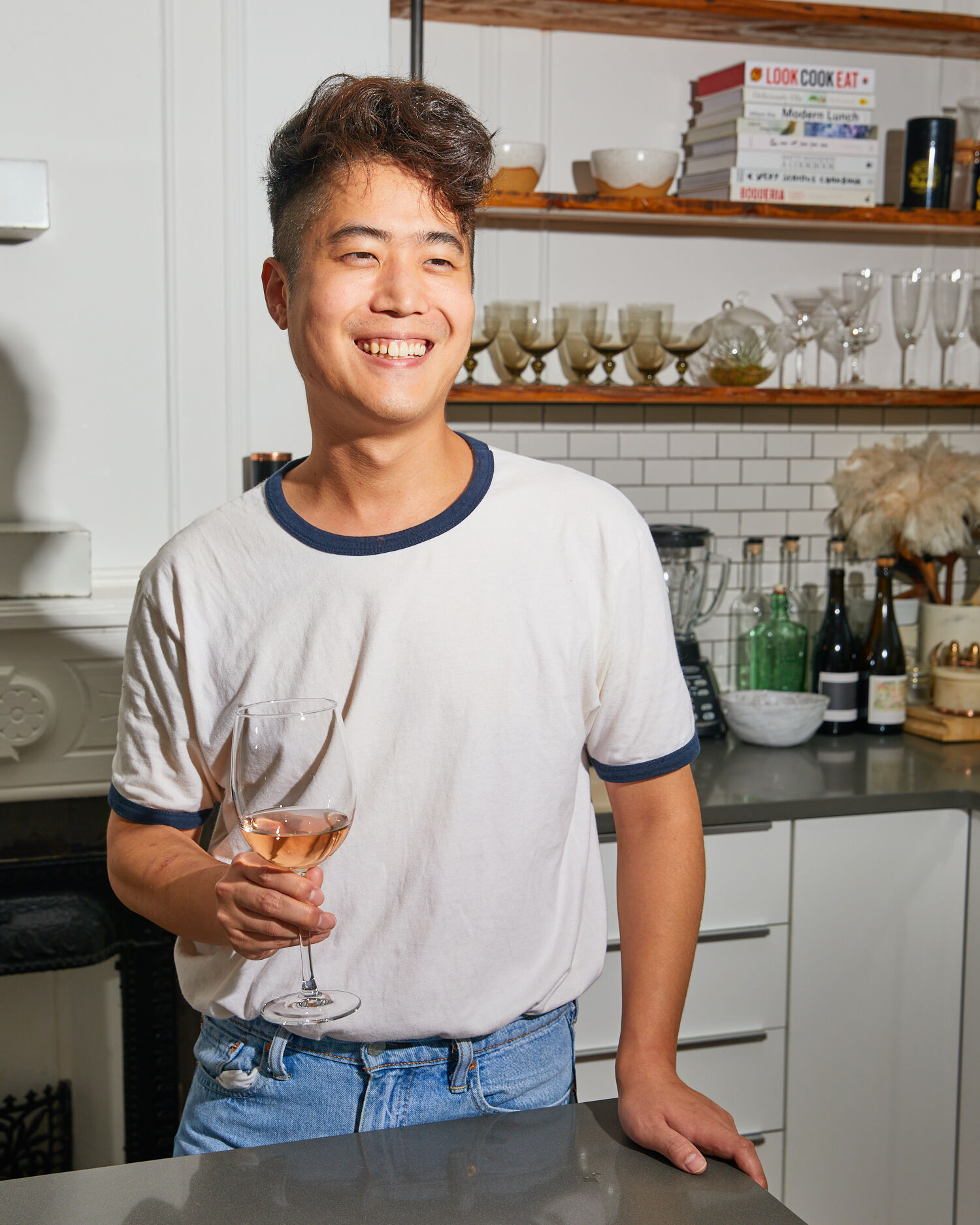On a recent Saturday, I found myself in a midtown Manhattan outpost of the Asian supermarket chain, H Mart, spending the equivalent of a VIP ticket to a Harry Styles concert on gochujang, gochugaru, maesil cheong, and other pantry items. This shopping spree was inspired by Eric Kim’s Korean American: Food That Tastes Like Home, my must-cook tome of the summer.
Kim, a New York Times staff writer, spent a year in his hometown of Atlanta with his mother, Jean, coaxing out traditional Korean recipes (“Getting a recipe out of my mother is like pulling teeth out of a tiger’s mouth,” he writes in the book’s introduction), and developing his unique interpretations of Korean American cuisine.
Their relationship has deepened over the years — both in and out of the kitchen — since Kim came out to his family. In 2018, he publicly shared how her recipe for kimchi fried rice held the family together. But coming out isn’t a static event, and the past four years have proven that the mother-son bond could deepen further.
“It’s constantly evolving, for sure,” Kim told INTO just after his book had landed on the New York Times’ Best Seller list. Kim considers the headnote for the Korean pear galette (p. 259) a sequel to his coming-out essay. “My parents were very accepting from the moment I came out to them,” he said. “But it didn’t come without challenges as a family, like getting used to this idea of me being gay, when for the past, at the time, 26 years of my life, I was just kind of straight to them.”
“There’s a little story about my ex-boyfriend and then my new boyfriend and how within that span — between those two relationships — was my mother’s kind of comfort with my being gay and her acquisition of language to talk about it,” Kim said.
Related: 12 Queer and Trans Asian and Pacific Islander Gamechangers You Should Know
As detailed as Kim’s directions are regarding the fanning of pear slices (“Place the pears in the center, shingling them over one another like fish scales”), so is his description of his mother’s choice of words, finally asking him “How’s your namja chingu (boyfriend) doing?”
“You don’t just come out once and then rinse your hands clean of it or something like that. You keep coming out,” said Kim. “And then, also, the people you come out to sort of have more questions down the line and learn more. It was a really lovely moment in the book to describe the evolution of my relationship with my mother in regards to my queerness.”

“Food has always been a nexus point for me for conversation, but also as a writer for intersections in my life, it’s almost like a plot point,” Kim said. “Food always kind of roots you, it’s a physical object you can write about, you can talk about, you can describe it. And I think that’s a really lovely way to tell a story around the food so that there’s something tangible there.”
When interviewing for his job at the Times, senior editor Genevieve Ko asked what recipe defined Kim. He responded with a roast chicken with carrot Panzanella recipe. “I’m not just a Korean cook. I’m not just an American cook. I love Japanese food. I love Mexican food — I love all cultures, all cuisines. I love cooking other people’s food as a way of getting to know someone,” Kim said. “I’m really grateful for this job because I’ve been able to cook on a daily basis. I’m developing recipes every day and thinking about home cooks, and I’m thinking about how to give people a delicious dinner, you know, but also to delight them and surprise them.”
Kim encourages home cooks to feel empowered in the kitchen and not be intimidated by classically trained chefs. “I think people are afraid to have opinions about cooking because there are chefs out there who do this professionally,” said Kim. “But actually, the people who cook the best, in my opinion, are the people who do it every day for their own dinner tables. And I think those are the people who have a lot to teach as well. I’m always asking people how they cook something when I’m at a party, not that I go to many parties. I’m basically a hermit, but I do think whenever I’m in a social setting, the one thing I try to get people to talk about is food.”
Time is an ingredient
Korean American is divided into eight chapters, including TV Dinners, Kimchi is a Verb, and Garden of Jean (named after Kim’s mother), among others. Though some recipes may take weeks to make, Kim quickly points out that “there’s a big difference between something that takes a long time and something that’s difficult.” Case in point: Jean’s perfect jar of kimchi (p. 68).
Kim writes that Jean’s kimchi (fermented napa cabbage, though many fruits and vegetables can be substituted) is the most important recipe in the book. Both product and process reveal insights into the legacy of Korean cuisine, but Kim also riffs on kimchi’s use with recipes like caramelized-kimchi baked potatoes and kimchi-braised short ribs. From a practical standpoint, kimchi adds a bright, fermented sharpness that brings balance to a dish. The combination, served with a simple bowl of white rice, is near perfection.

Kim says that metaphorically, kimchi also tells the Korean story, which is one of survival.
“Kimchi is what you would make to preserve the fall crops,” Kim said. “Over the winter, you would store the kimchi in these earthenware pots and bury them under the ground. They would stay there fermenting very slowly into the spring. And then you’d have all this food when there are no crops. The winters in Korea are really harsh and violent. I think it’s super Korean to want to preserve the life of food because food is never just something that you eat. I think that tells the story of Korean resilience.”
While much of Korean American is rooted in recipes developed with Kim’s mother, other family members’ contributions include his aunt Georgia’s soy sauce fried chicken, which appears on the book’s cover. The twice-fried chicken relies solely on potato starch for its coating, and a strategic double dredge and fry results in a fried chicken that “stays crispy forever. That’s why we eat it cold at parties; it’s super crunchy,” Kim said. “And then there’s a third element, which is this soy sauce glaze, which almost candies the outside. It’s a really genius recipe. I think she’s really mastered it over the years.”
The Ultimate Comfort Food
Kim had always envisioned a long, last supper-style dining table, with his family of choice eating and passing food. But after several years of pandemic sequestering and a return to his parents’ home to develop the book’s recipes, he rediscovered the love for his childhood table.
“What I actually want is like my table at home in Atlanta, which is a circular table, which lets you have a conversation — all of you at once. And it’s not just like individual pockets of conversation. I think the best dinner parties are when everyone’s engaged in the same conversation. You can only really do that in a smaller setting.”

Currently in a long-distance relationship, Kim “finds a lot of beauty and joy in the quotidian” — dinner before heading back to New York City or weekend breakfast and coffee at his kitchen prep table. “He does the crossword puzzle; it sounds really idyllic because it is,” said Kim of time with his boyfriend, Paolo. “And it’s something that I always wanted. The ordinary is where I think there’s a lot of meaning. And that’s the same table where he reached across and was like, ‘This is what makes life worth living.’ And we always make fun of that line. It sounds cheesy. But it was just like, such a perfect thing to say because that is how I feel about that moment.”
As for the intersection of queerness and food, Kim doesn’t pretend to have an easy answer for how our identities manifest in a recipe or the kitchen, but there is an undeniable boldness required to harness raw ingredients and cooking techniques to create something entirely new (or perfect something familiar).
When asked if he’d found himself growing more fearless both professionally and personally while writing Korean American, Kim said, “I would definitely say fearless with a capital ‘F.’ Taylor Swift, Grammy-winning album of the year. The version with the black album cover and her hair is kind of like a lion mane. I love that song.”♦
Help make sure LGBTQ+ stories are being told...
We can't rely on mainstream media to tell our stories. That's why we don't lock our articles behind a paywall. Will you support our mission with a contribution today?
Cancel anytime · Proudly LGBTQ+ owned and operated
Read More in Culture
The Latest on INTO
Subscribe to get a twice-weekly dose of queer news, updates, and insights from the INTO team.
in Your Inbox













